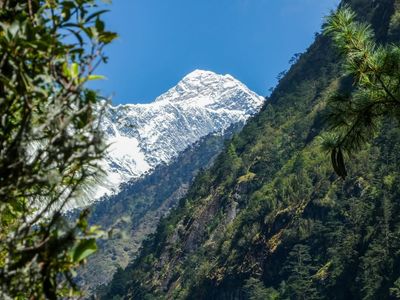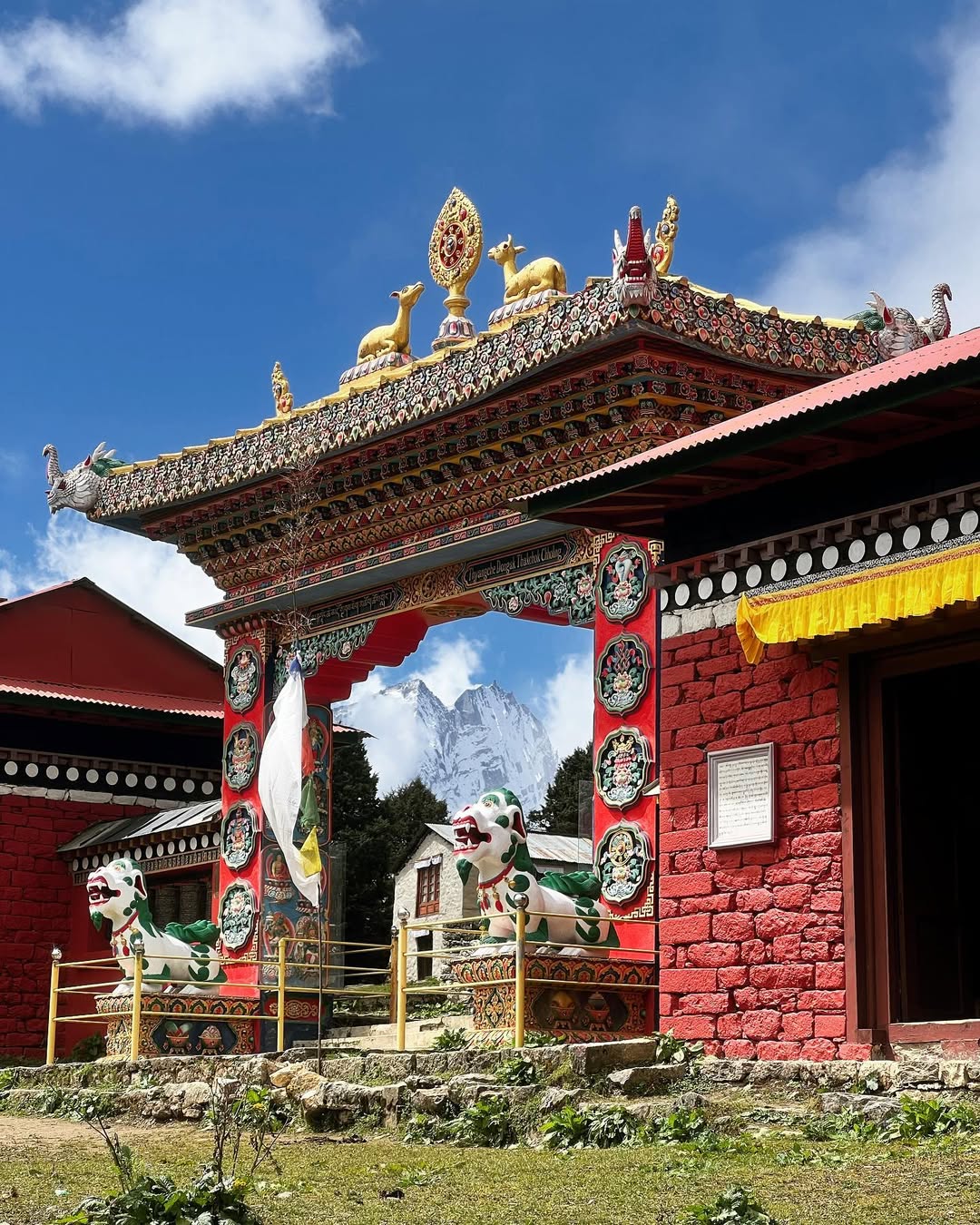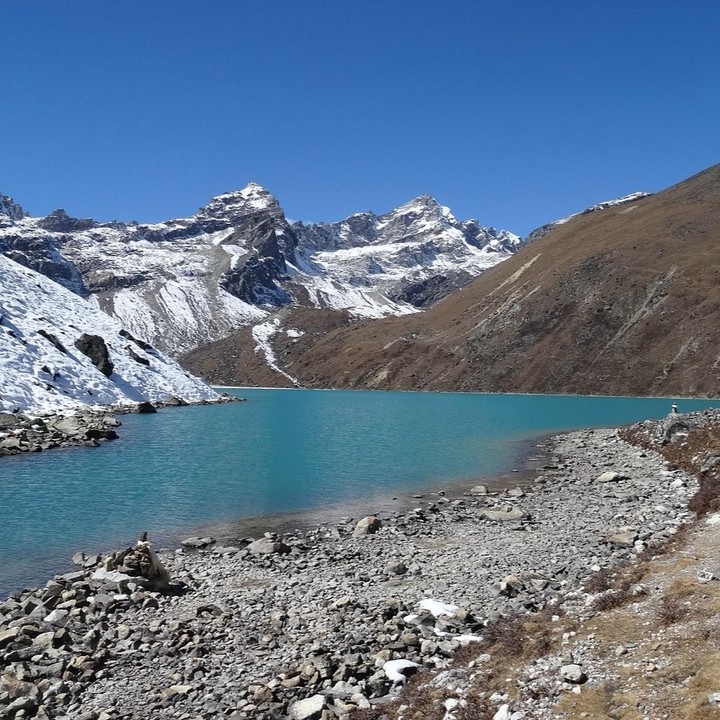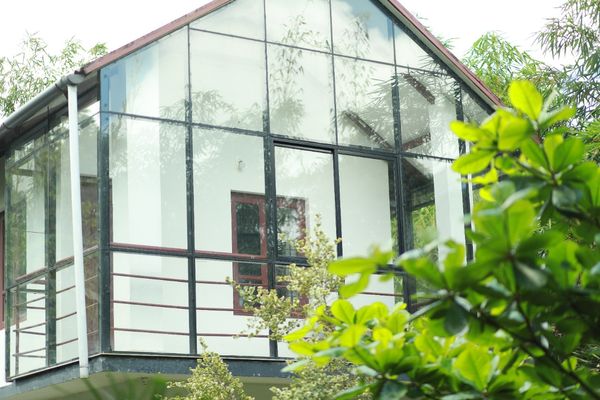Sagarmatha National Park: A Himalayan Wonderland of Peaks, Culture, and Wilderness
 Ankit Rawat
08 Aug, 2025
11 mins read
46
Ankit Rawat
08 Aug, 2025
11 mins read
46

High in the northeastern Himalayas of Nepal lies Sagarmatha National Park, a region so raw, so majestic, that it seems untouched by time. It is home to Mount Everest, the highest point on Earth, and is surrounded by a pristine world of snow-capped giants, cascading glaciers, glacial rivers, and deep alpine forests. But beyond its natural grandeur, the park is also a living canvas of Sherpa culture, spiritual devotion, and ecological wonder.
Covering over 1,148 square kilometers in the Solukhumbu district, Sagarmatha is not just for trekkers or climbers it's a world heritage destination where adventure meets heritage. Declared a UNESCO World Heritage Site in 1979, this high-altitude ecosystem is a protected sanctuary for endangered species and an ancient land where Buddhist prayer flags flutter in the icy winds. From lush rhododendron valleys in the lower reaches to the harsh alpine desert near Everest Base Camp, the park offers some of the most awe-inspiring terrain on the planet.
If you're seeking a journey that blends unmatched natural beauty, ancient culture, and high-altitude adventure, Sagarmatha National Park is where your heart will find its summit.
History of Sagarmatha National Park
The creation of Sagarmatha National Park was both a response to increasing global interest in the Everest region and a move to preserve its unique ecology and culture. Officially established in 1976, it became Nepal's first national park to be inscribed as a UNESCO World Heritage Site in 1979. The designation recognized not just the dramatic landscapes, but also the rich traditions of the indigenous Sherpa people who have lived in the region for centuries.
The name “Sagarmatha†itself means “Forehead of the Sky†in Nepali a tribute to Everest’s towering presence. In Tibetan, it’s known as Chomolungma, meaning “Goddess Mother of the World.†Long before modern adventurers set foot here, the mountain and its surroundings were considered sacred by the locals.
Over the decades, Sagarmatha has evolved from a spiritual wilderness into one of the most iconic trekking and mountaineering destinations in the world. Yet, despite its popularity, the region has retained much of its authenticity, largely thanks to conservation efforts, community-based tourism, and the resilience of its highland communities.
Top Places to Visit in Sagarmatha National Park
1. Everest Base Camp (EBC)
A 14-day journey through the Solukhumbu region, the Everest Base Camp trek takes you to 5,364 meters at the foot of the world’s highest peak. The route passes through Sherpa villages, dense forests, and the rich biodiversity of Sagarmatha National Park.
Known as one of the greatest adventures globally, the trek offers cultural experiences, encounters with wildlife, and sweeping views of the snow-covered Himalayas.
- Best Time: Spring (Mar–May) and Autumn (Sep–Nov)
- Trek Duration: 12–14 days round trip from Lukla
2. Namche Bazaar
Often called the "Gateway to Everest," Namche Bazaar (3,440 m) is the main trading and cultural hub of the region. It's the perfect place to acclimatize, grab last-minute gear, or learn about Sherpa heritage through local museums and monasteries.
- Don't Miss: A hike to Everest View Hotel for panoramic sunrise views.
3. Tengboche Monastery
Tengboche is not only a spiritual center but also a scenic jewel set against towering peaks like Ama Dablam and Everest. At 3,867 meters, this historic monastery is a peaceful retreat for trekkers and a place of great significance during the Mani Rimdu Festival.
- Experience: Attend early morning chants and interact with local monks.

Tengboche Monastery
4. Gokyo Lakes and Gokyo Ri
A quieter but equally stunning alternative to EBC, Gokyo Valley boasts six shimmering glacial lakes and a climb to Gokyo Ri (5,357 m). The viewpoint provides a panoramic look at four of the world’s highest peaks including Everest.
- Ideal For: Trekkers seeking fewer crowds and unmatched views
5. Khumjung and Khunde Villages
Just beyond Namche, these traditional Sherpa villages offer an intimate look at life in the mountains. Highlights include the Hillary School, Khunde Hospital, and Khumjung Monastery, which holds a relic believed to be a Yeti scalp.
- Legacy: Built with support from Sir Edmund Hillary’s Himalayan Trust
Things to Do in Sagarmatha National Park
High-Altitude Trekking Adventures
Choose from iconic trails like:
- Everest Base Camp Trek
- Three Passes Trek
- Gokyo Ri Trek
Each route provides distinct scenery and challenges, with access to glaciers, moraines, and Sherpa culture.

Gokyo Ri Trek
Wildlife Encounters
Despite its harsh terrain, the park hosts rich biodiversity. Species include:
- Snow Leopard
- Musk Deer
- Himalayan Tahr
- Red Panda
- Danphe (Impeyan Pheasant)
Birdwatchers will be thrilled by the variety of high-altitude avian life.
Cultural Immersion
- Visit sacred Buddhist monasteries
- Attend the Mani Rimdu Festival in Tengboche
- Share meals in Sherpa homes
- Learn about mountain spirituality and local legends
Catch Sunrise at Kala Patthar
Standing at 5,545 meters, Kala Patthar offers the closest and clearest view of Everest without climbing it. Catching the sunrise from this point is often considered the highlight of the entire journey.
Practical Information
- Location: Solukhumbu District, Nepal
- Altitude Range: 2,845 m (Monjo) to 8,848.86 m (Everest)
- How to Reach: 35-minute flight from Kathmandu to Lukla Airport
- Permits Needed:
- Sagarmatha National Park Entry Permit
- TIMS Card (Trekkers’ Information Management System)
Best Time to Visit Sagarmatha National Park
Season Conditions Recommended Activities
Spring (Mar–May) Clear skies, rhododendrons blooming Trekking, cultural tours
Autumn (Sep–Nov) Best visibility, stable weather Trekking, sunrise hikes
Winter (Dec–Feb) Snowy, cold, fewer tourists Quiet treks, monastery visits
Monsoon (Jun–Aug) Rainy, cloudy, leech-prone Not ideal for trekking
Nearby Places to Explore
- Phakding – First major stop from Lukla, riverside lodges
- Monjo – Entry checkpoint and small village with great mountain views
- Thame – Historic village and spiritual retreat with an ancient monastery
- Lobuche & Dingboche – High-altitude stopovers with spectacular alpine scenery
Conclusion: A Journey That Stays With You
Sagarmatha National Park is more than just a trekker’s paradise it's a sacred world where nature, culture, and adventure exist in perfect balance. With its soaring peaks, spiritual heartlands, and resilient communities, the park leaves an indelible impression on every soul that journeys through it. Whether you come to climb, reflect, or simply witness its beauty, Sagarmatha will forever echo in your memory like the wind that dances through its valleys.
Written By:
Ankit Rawat



Hotels at your convenience
Now choose your stay according to your preference. From finding a place for your dream destination or a mere weekend getaway to business accommodations or brief stay, we have got you covered. Explore hotels as per your mood.





